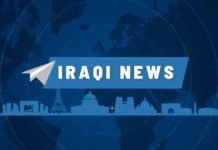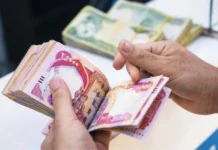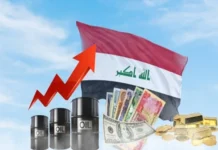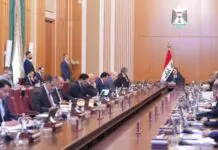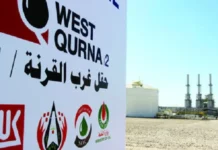The Iraqi Dinar’s Journey Through Five Turbulent Years
From Kadhimi’s devaluation to Al-Sudani’s platform: The Iraqi Dinar’s Journey Through Five Turbulent Years
Baghdad Today – Baghdad Since the end of 2020, when Mustafa al-Kadhimi’s government decided to raise the official exchange rate from 1,180 to 1,450 dinars to the dollar, Iraq has been on a volatile economic trajectory that continues to this day. This decision, taken at the height of the oil price collapse, temporarily saved the general budget but opened the door to a wave of inflation that undermined the dinar’s long-standing stability.
With the arrival of Mohammed Shia al-Sudani’s government, the Central Bank took a corrective step in early 2023, reducing the rate to 1,320, in an attempt to alleviate popular pressure. However, the crisis later deepened with the introduction of an electronic platform that linked transfer transactions to direct oversight by the US Federal Reserve.
Although the platform was abolished this year, the market has not regained its balance, with the gap between the new official rate of 1,144 dinars to the dollar and the parallel market rate remaining at least 10 to 12 points, reflecting the continued structural flaws in monetary policy management.
In this context, Abdul Rahman Al-Shaikhli, a financial and economic expert, explained to Baghdad Today that “the Iraqi foreign exchange market is witnessing significant fluctuations in the dollar exchange rate against the dinar, which has direct repercussions on the economic and commercial landscape.”
This description reflects a situation that has existed for years, as the Central Bank’s measures are no longer able to control the gap between the formal and parallel markets, especially after control shifted from the electronic platform to the dominance of parallel market networks.
Research estimates indicate that this gap is no longer solely related to technical procedures, but rather to deeper factors related to the nature of the rentier economy and its near-total reliance on imports.
Patchwork Procedures And Limited Treatments
Despite the government and central bank’s attempts to contain the crisis, the interventions remain in the view of a number of experts without lasting impact. In a previous interview, economist Nasser Al-Kanani described attempts to control the market as “patchwork measures,” explaining that “most of the decisions taken by the government and central bank do not address the problem.”
This view is echoed in field experience, where the parallel market maintained its dominance even after price reduction decisions. This suggests that the problem extends beyond partial decisions to a structural flaw in the management of supply and demand. Economic analyses indicate that relying solely on ad hoc solutions fosters speculation and undermines actors’ confidence in the stability of the monetary system.
Electronic Platform And Removal Of Restrictions
The electronic platform, introduced in 2023, was the most prominent US oversight tool for transfers. It required banks to disclose the identity of the final beneficiary within 24 hours, down from the previous 20-day deadline. This measure prompted many banks and merchants to refrain from dealing directly with the currency window.
Although the platform was abolished this year, its impact remained, with a gap of at least 10–12 points between the new official rate (1144) and the parallel market. According to banking estimates, the abolition did not end actual reliance on informal channels, but rather restored activity to the parallel market and kept control away from official institutions.
The Dollar Remains Captive Despite Attempts At Diversification.
Meanwhile, the Central Bank attempted to address the crisis by opening channels for remittances in alternative currencies, such as the Emirati dirham, the Turkish lira, the Indian rupee, and the euro. Central Bank Governor Ali Al-Alaq explained that “the bank is proceeding with the gradual elimination of foreign remittances and opening direct channels with foreign banks in several currencies.”
However, economist Nabil Al-Marsoumi previously noted that “Iraq will remain a prisoner of the dollar as long as its oil exports are denominated in the dollar and its reserves are predominantly in it.” According to research, diversification remains of limited effect, as major trade transactions with China and other countries can ultimately only be settled in dollars.
Monetary And Trade Policy: An Inseparable Intertwining
Al-Sheikhly adds, “The continuation of this volatility undermines investor confidence and delays many business plans.” This diagnosis aligns with the statement of former Central Bank official Mahmoud Dagher, who emphasized that “monetary policy cannot operate in isolation from fiscal and trade policy.”
According to Dagher, Iraq imports most of its needs through irregular channels, creating a parallel demand for the dollar and weakening the impact of monetary policy.
In the same context, the Prime Minister’s economic advisor, Mazhar Mohammed Salih, explained that “the duality of the domestic currency is one of the most dangerous aspects, and dealing in anything other than the dinar undermines the centers of economic stability.” These observations indicate that reform cannot be purely monetary, but rather requires a restructuring of both trade and financial policy.
The Political And Regional Dimension Of The Crisis
The monetary crisis was not isolated from regional balances. Dagher previously explained that “the essence of the current crisis is the conflict between the United States and Iran,” while Raed Al-Azzawi, head of the Al-Amsar Center for Strategic Studies, asserted that “the Federal Reserve’s steps were aimed at curbing the flow of dollars to Iran via Iraq, but the result is that the Iraqi government and people are paying the price.”
This political dimension reinforces the hypothesis that the monetary crisis is not merely an economic imbalance, but rather a direct reflection of the conflicts affecting Iraq due to its geopolitical location.
Al-Sheikhly concluded by emphasizing that “exchange rate stability is a pivotal factor in supporting economic growth, revitalizing the commercial sector, and protecting Iraqi citizens’ income from erosion.” This social dimension reflects that citizens remain the party most affected by every wave of fluctuation.
Financial expert Hossam Al-Khaizan had previously pointed out that “continuous speculation and smuggling threaten the value of the dinar, and that families are paying the heaviest price because most food items are imported in dollars.” In the same context, economic researcher Ahmed Abd Rabbo called for a comprehensive reform package, while expert Ziad Al-Hashemi warned of “further price increases due to the scarcity of the dollar supply.”
Cumulative Crisis
The trajectory extending from the devaluation of the dinar in 2020, to the devaluation in 2023, to the platform’s trial and subsequent abolition in 2025, demonstrates that the crisis is cumulative in nature. What has changed are the instruments: from government decisions to international oversight, then a return to local management. What has not changed is the parallel market’s dominance of exchange rates.
The expected impact is that the gap between the formal and parallel sectors will persist unless structural imbalances are addressed: weak trade policy, multiple informal outlets, and the state’s near-sole reliance on oil and the dollar. Ultimately, citizens remain the biggest losers from this protracted crisis, paying the price for the still-unresolved internal and external balances with their daily sustenance. Source: Baghdad Today + Agencies https://baghdadtoday.news/283204-.html
For current and reliable Iraqi news please visit: https://www.bondladyscorner.com

